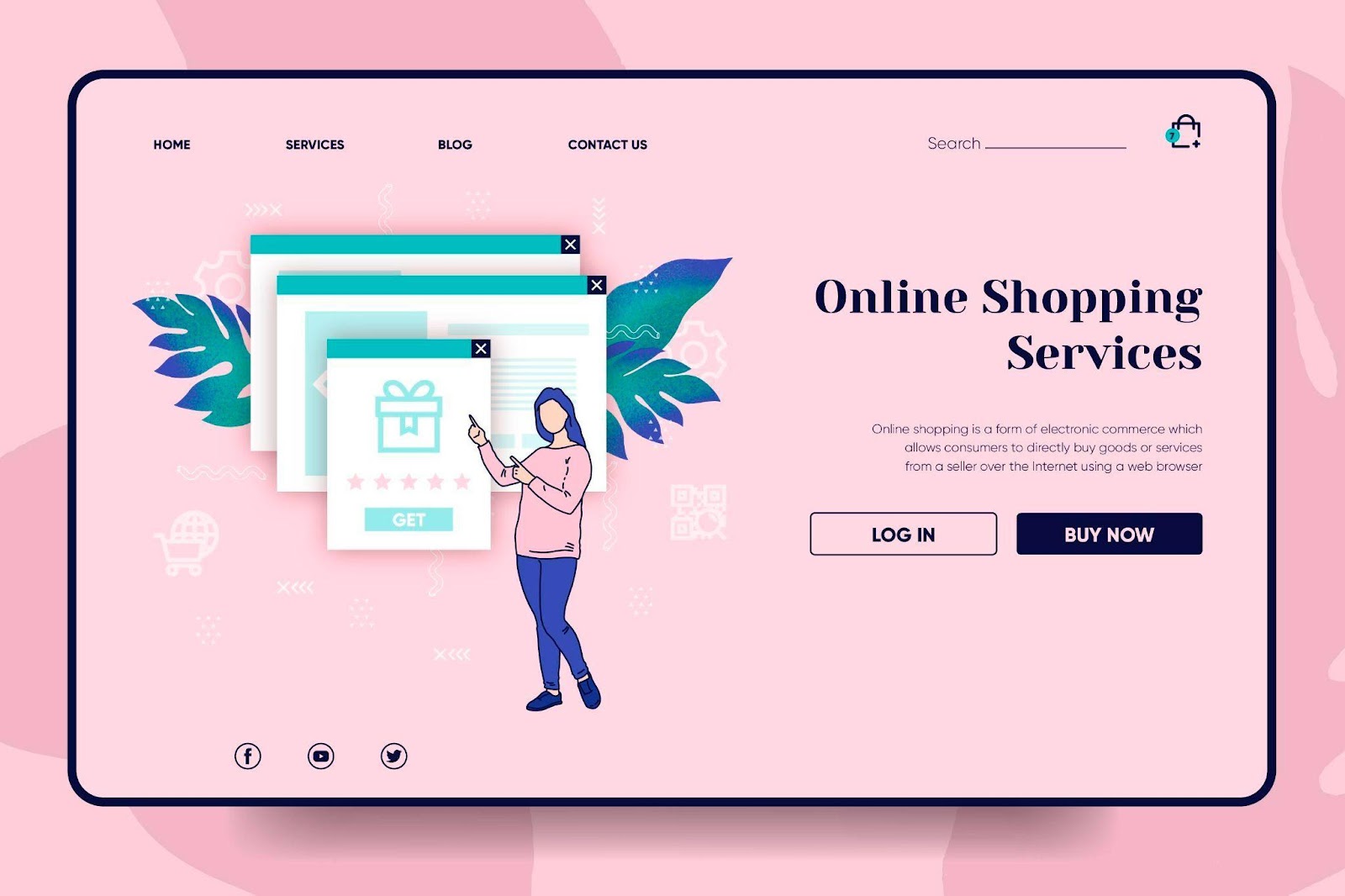Ecommerce integrations are a cornerstone of retail success. And in UAE, the increasing shift towards online shopping means higher demand for well-designed e-commerce websites to attract and retain customers. This article explores the essential elements of e-commerce website design, highlights current trends, and provides best practices for creating an engaging online shopping experience.
What is Ecommerce Website Design?
E-commerce website design means to create and optimize the user interface of online stores so they provide a seamless and enjoyable shopping experience for users. Reputable web developer company in dubai consider various factors when designing ecommerce websites, including usability, aesthetics, responsiveness, and technical performance. While a well-designed e-commerce site looks appealing, it also needs easy navigation, fast load times, and secure transactions. These factors significantly impact user experience and, ultimately, sales and customer loyalty for that specific ecommerce brand.
According to research, visitors leave a website if it doesn’t load within 3 seconds. And website design principles have an important role when it comes to loading and navigation. A poor website design means:
- Your visitors leave the website – your bounce rate goes high and Google starts pushing you down the SERPs.
- Your visitors buy from your competitors – you lose leads, conversions, sales and a good chunk of business.
- Your visitors become loyal to your customers – you’ll have to make serious changes to pricing to acquire and attract new buyers.
4 Main Components of E-commerce Website Design
- User Interface (UI) Design
A clear and intuitive navigation structure helps users find products easily. Implementing a well-organized menu, search functionality, and category filters improves your target audience’s shopping experience. There are two major parts of intuitive design:
- Visual Hierarchy
Using visual hierarchy techniques, such as size, color, and placement, guides users’ attention to important elements like calls to action (CTAs), product highlights, and promotions.
- Consistency
Maintaining a consistent design across all pages reinforces brand identity and ensures a cohesive user experience. Consistency in fonts, colors, and layout builds familiarity and trust.
- User Experience (UX) Design
Ensuring the website is accessible to all users, including those with disabilities, is essential. Features like screen reader compatibility, keyboard navigation, and alt text for images make the site inclusive. There are two ways to make your ecommerce website more accessible:
- Easy Checkout Process
Simplifying the checkout process reduces cart abandonment rates. Implementing a one-page checkout, guest checkout option, and multiple payment methods enhances convenience for users.
- Mobile Optimization
With the rise of mobile shopping, having a mobile-responsive design is critical. A mobile-optimized site adapts to different screen sizes, providing a seamless experience across devices.
- Visual Appeal
Choosing a visually appealing color palette and readable fonts creates an inviting and pleasant shopping environment. With the color choice, there are two ways to improve the visual appeal of your ecommerce store:
- Brand Consistency
Incorporating brand elements such as logos, colors, and typography consistently across the site reinforces brand identity and recognition.
- High-Quality Images
Using high-resolution images for product photos and banners enhances visual appeal and helps customers make informed purchase decisions.
- Technical Aspects
Incorporating SEO best practices, such as optimized meta tags, clean URLs, and mobile-friendly design, improves the technical architecture of your website plus attracts search engine rankings and drives organic traffic. There are two ways to handle the technical side of your website for better SEO: by partnering with experts from the top app development companies in Dubai or by building an in-house team with the necessary skills and knowledge.
- Loading Speed
Fast loading times are crucial for retaining users and reducing bounce rates. Optimizing images, using caching techniques, and minimizing code can improve site performance.
- Security Features
Implementing security measures such as SSL certificates, secure payment gateways, and data encryption builds trust and protects customer information.
These are important considerations for custom ecommerce websites – you can put lesser effort, hire an ecommerce web developer, choose a theme that suits your product line, then optimize the same.
2024 Design Trends in E-commerce Websites
There are top 3 design trends that you’ll most likely notice in a lot of ecommerce websites of Dubai-based businesses:
- Minimalist Design
Emphasizing simplicity and clean layouts, minimalist design reduces clutter and focuses on essential elements, providing a smooth and distraction-free shopping experience.
- Micro-Interactions
Small, interactive elements like hover effects, animations, and feedback responses enhance user engagement and make the site more dynamic and enjoyable.
- Personalization
Utilizing data and AI to provide personalized recommendations, tailored content, and customized user experiences can significantly increase user satisfaction and sales.
4 Best Practices for E-commerce Website Design
- Conduct User Research and Testing
Understanding target audience preferences and behaviors through surveys, interviews, and usability testing helps tailor the design to meet their needs and expectations. Secondly, regularly testing the site post-launch with real users and analyzing their feedback identifies pain points and areas for improvement.
- Keeping Design Simple and Intuitive
Avoid overly complex designs and focus on simplicity. This will help users navigate the site effortlessly. A clear layout, straightforward CTAs, and minimal distractions enhance usability. Consider Implementing a user-friendly search functionality with filters and autocomplete features especially if you have more than 4 product categories and over 25 products.
- Ensure Fast Load Times and High Security
Optimize the website’s performance by compressing images, leveraging browser caching, and minimizing HTTP requests. Prioritize security by using SSL certificates, implement secure payment gateways, and regularly update software to protect user data and build trust.
- Regularly Updating the Website Based on Feedback and Analytics
Continuously monitoring website analytics and user feedback provides insights into user behavior, preferences, and areas for improvement. Regularly updating the site with fresh content, new features, and design enhancements keeps the user experience engaging and relevant.
Conclusion
Effective e-commerce website design is vital for attracting and retaining customers especially if you are in a generic niche with a lot of competition for your products. By focusing on essential components such as UI and UX design, visual appeal, and technical aspects, ecommerce businesses can create a seamless and enjoyable shopping experience. Staying updated with design trends and following best practices ensures the website remains user-friendly and competitive. Invest in good e-commerce design because it ultimately leads to higher customer satisfaction, increased sales, and long-term success.














